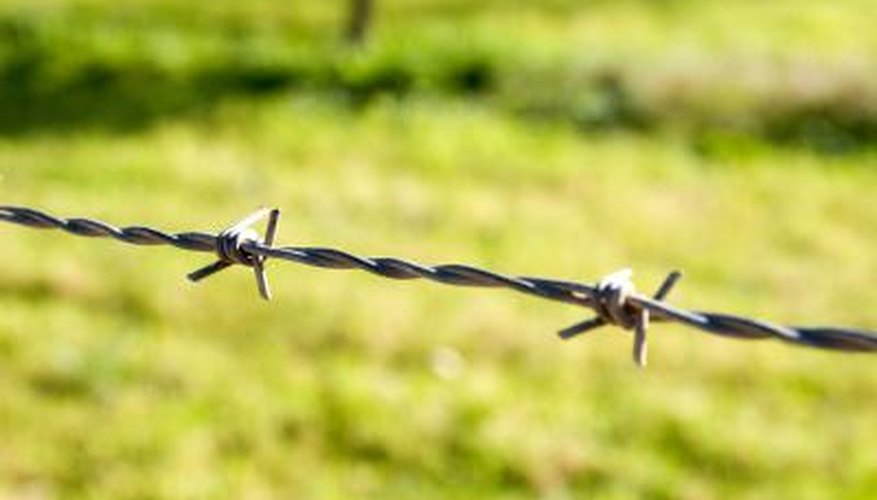Barbed wire is a type of fencing typically used on farms and ranches to keep intruders out and animals in. It has sharp points that if rubbed up against can cause a cut. For minor cuts, the steps are simple: Clean the wound, apply antibacterial ointment and cover it with a clean bandage. It is important to assess the situation and consult a doctor for more serious situations, such as bleeding that cannot be stopped, deep wounds or wounds caused by a rusty object.
- Barbed wire is a type of fencing typically used on farms and ranches to keep intruders out and animals in.
- It is important to assess the situation and consult a doctor for more serious situations, such as bleeding that cannot be stopped, deep wounds or wounds caused by a rusty object.
Consult a doctor if the cut is deep, the barbed wire was rusty or the bleeding cannot be stopped. A tetanus shot may be required to prevent lockjaw or a major infection if the wire was rusty. Stitches and oral antibiotics may be required for deep cuts.
Wash your hands thoroughly with soap and water or put on latex gloves to prevent infection. Rinse out the cut thoroughly with water and gently wash with mild soap and water in order to remove debris. Do not rub the cut, as it can aggravate it and cause further damage to the area. Avoid using cotton balls; the lint will get stuck in the cut and is difficult to remove.
- Wash your hands thoroughly with soap and water or put on latex gloves to prevent infection.
- Avoid using cotton balls; the lint will get stuck in the cut and is difficult to remove.
Apply direct pressure to the wound to stop the bleeding. Put a clean pad over the cut and press firmly, not letting up for a few minutes. If after 10 minutes it is still bleeding, consult a doctor, because you may have cut an artery or tendon. Once the bleeding has stopped, throw the pad out.
Place an antibacterial ointment on the cut and cover it with a clean, sterile bandage. For small cuts, use an adhesive bandage, and for larger cuts, use a sterile, non-stick pad and secure with adhesive tape. Be sure to change bandages at least once per day in order to keep the area clean and to prevent infection.
- Place an antibacterial ointment on the cut and cover it with a clean, sterile bandage.
Look for signs of infection in and around your cut when changing your bandages. If the area around the wound is red and swollen or the cut oozes greenish or yellowish pus, this could indicate that the cut is infected and not healing. Oral antibiotics may be necessary to heal. If you see red streaks, consult doctor immediately, this may indicate a serious infection in the lymphatic system.
